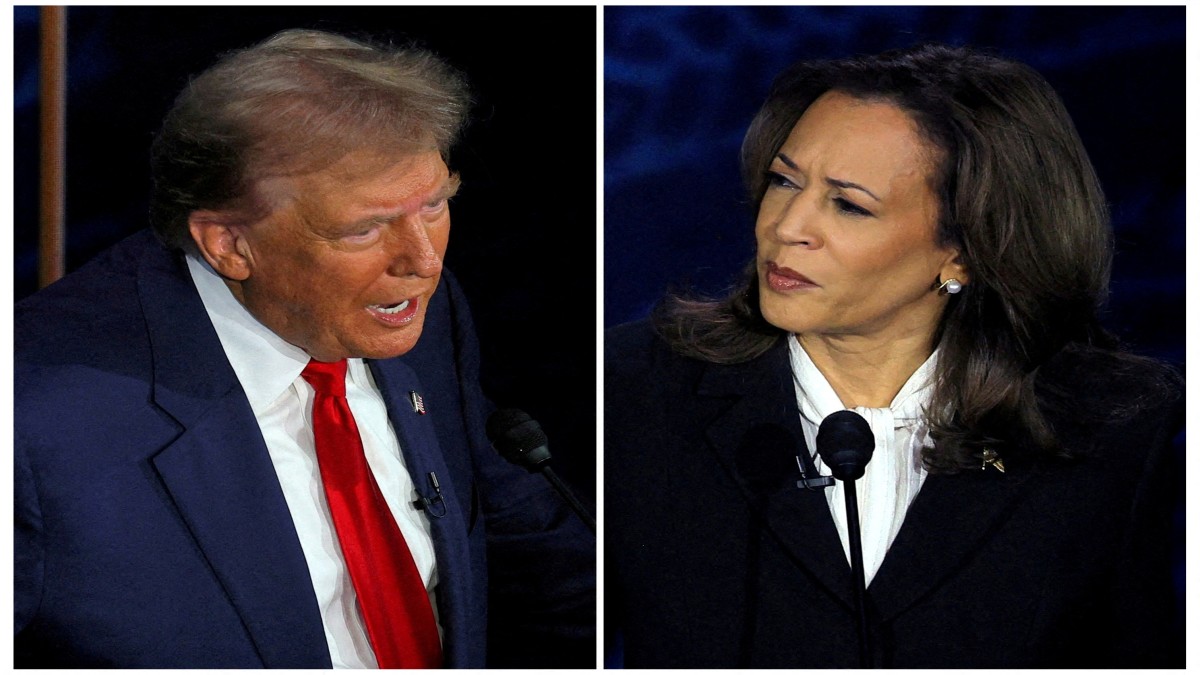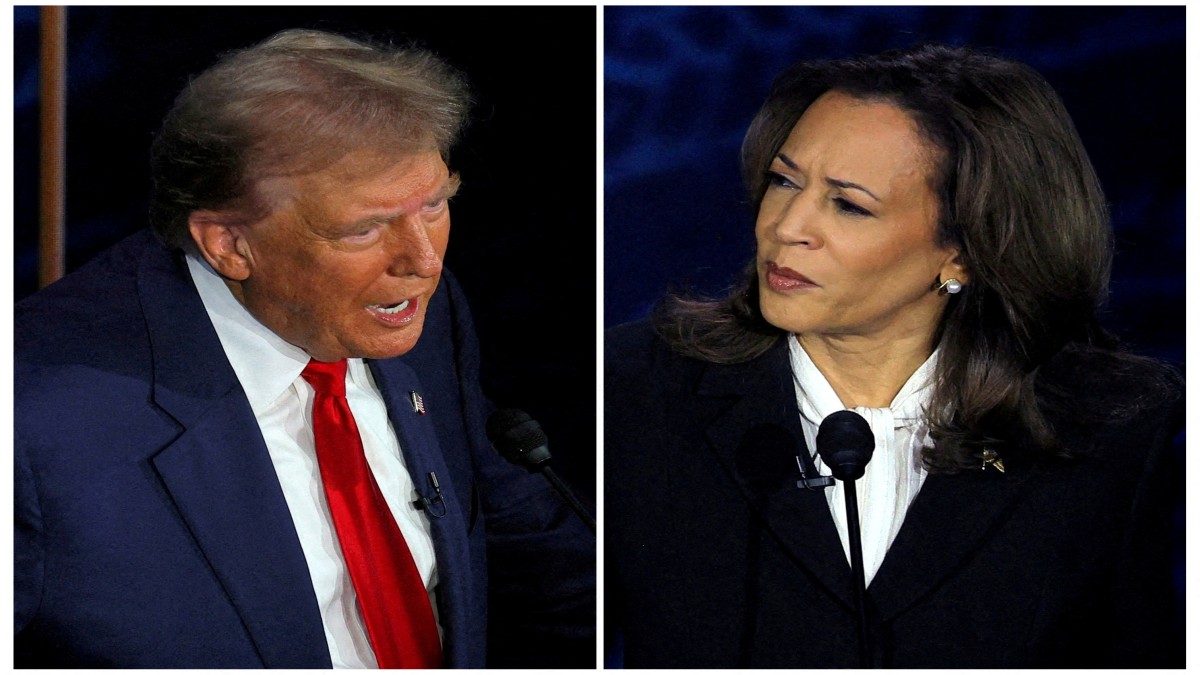The US presidential election is a highly structured process that involves multiple stages, key figures, and a unique voting system.
It is far from a simple popular vote, and understanding how it works helps explain why certain states get more attention and why some candidates succeed despite losing the popular vote.
As we head into the 2024 election, let’s break down the important aspects of the US election process:
Who are the candidates in the 2024 US presidential race?
The upcoming 2024 presidential election features a diverse array of candidates.
On the Democratic side, US Vice President Kamala Harris, who succeeded Joe Biden on July 21, is leading the ticket. She will turn 60 this month, and has chosen Minnesota Governor Tim Walz, 60, as her running mate.
On the Republican side, former US President Donald Trump is running again at 78 years old, with Ohio Senator JD Vance, 40, as his vice-presidential candidate.
Apart from the two major party candidates, Jill Stein is running for the Green Party, having previously contested in 2012 and 2016, while Chase Oliver is the Libertarian Party’s candidate.
Notably, Robert Kennedy Jr, son of the former attorney general and nephew of US President John F Kennedy, has suspended his independent campaign and endorsed Trump.
Stein’s previous runs and the Green Party’s 2020 candidate, Howie Hawkins, reflect the ongoing presence of third-party challengers, though they have yet to pose a serious threat to the two-party dominance in US presidential elections.
There are numerous other candidates affiliated with other minor parties or those who are running independently, but do not have majority ballot access.
What is the Electoral College and how does it work?
One of the most distinctive aspects of US presidential elections is that Americans do not directly vote for their president. Instead, they cast votes for electors in the Electoral College, a body that ultimately chooses the president.
There are 538 electors in total, representing 435 members of the House of Representatives, 100 Senators, and 3 electors from Washington DC. The magic number for victory is 270 electoral votes — an absolute majority.
Each state’s allocation of electors is proportional to its representation in Congress, with larger states like California having more electors (55) compared to smaller states like North Dakota (3).
The candidate who wins the most votes in a state typically takes all of that state’s electoral votes under a “winner-take-all” system, used in 48 states and Washington DC. Maine and Nebraska, however, use a proportional system that can split electoral votes based on district-level and statewide results.
The 2020 census altered the distribution of electors by shifting seats in the House of Representatives. For instance, Texas gained two additional seats and now holds 40 electoral votes, while states like California, New York, and Michigan each lost one electoral vote. This redistribution reflects population changes and impacts the electoral weight of different states in upcoming elections.
As a result of this system, candidates can lose the popular vote but still win the presidency by securing key electoral votes, as demonstrated in the 2016 election, when Hillary Clinton garnered almost 3 million more votes than Trump but lost in the Electoral College.
Similarly, in 2000, George W Bush won the presidency with 271 electoral votes, while his opponent, Al Gore, won the popular vote by over half a million.
What about early voting and mail-in ballots?
In recent years, early voting and absentee voting have played an increasingly significant role. Although the official election date is November 5, 2024, millions of Americans will cast their votes weeks in advance through mail-in ballots or in-person early voting.
This practice saw a sharp rise in 2020 due to the COVID-19 pandemic, with absentee ballots accounting for 42 per cent of the total votes cast, according to the MIT Election Data + Science Lab. In total, 158 million votes were cast in the 2020 election, with absentee voting reaching a high of 66.4 million — up from 28.8 million in 2016.
Despite Trump’s claims that absentee voting was “fraudulent,” extensive research has shown that voter fraud through this method is exceedingly rare. In the 2022 mid-term elections, absentee voting fell to 32 per cent, but it continues to remain a crucial voting method for many Americans.
Early voting is widely accessible in 47 states, along with territories like Guam, Puerto Rico, and the Virgin Islands. In most states, voters do not need a specific reason to cast their votes early, but some states require individuals to request absentee ballots for early voting.
Only three states — Alabama, Mississippi, and New Hampshire — do not offer early in-person voting.
How is ballot counting done?
Once voting ends, the process of counting the ballots begins, and the first set of results is typically known by the end of election night. Polling stations generally close between 6:00 pm and 8:00 pm, with the winner often projected by 11:00 pm Eastern Time.
However, the rise in mail-in ballots has led to delays in final results, particularly in swing states where margins are tight. In 2020, for instance, Joe Biden was declared the winner only after multiple days of counting in critical battleground states.
Media outlets such as CNN, NBC, and ABC rely on real-time vote counts and exit polls to project winners, while the Associated Press (AP) uses a more conservative approach. The AP employs around 4,000 correspondents across the country and only declares a winner once they are certain that the remaining uncounted ballots will not change the outcome.
The final step in the election process occurs in December when the Electoral College formally casts its votes. State governors or secretaries of state certify the results, and on January 6, 2025, Congress will officially count the electoral votes.
The newly elected president will be inaugurated on January 20, 2025, marking the start of a four-year term.
How important are Swing states?
Swing states, also known as battleground states, play an outsized role in determining the outcome of presidential elections. These states do not have a consistent pattern of voting for one party and can swing either Republican or Democrat in any given election.
Key swing states in 2024 are likely to include Arizona, Georgia, Michigan, Nevada, Pennsylvania, and Wisconsin. Winning these states is often decisive for candidates due to the significant number of electoral votes at stake.
Campaigns pour millions of dollars into advertising and voter outreach in swing states. As of November 2023, Trump was leading in all but Wisconsin, highlighting how competitive these states can be.
In addition to presidential votes, voters in many of these states will also be deciding on crucial local issues, including referendums on abortion rights in states like Montana and Arizona.
Who else are Americans voting for?
The US presidential election is just one part of the broader voting process. On November 5, 2024, Americans will also elect 468 members of Congress, comprising 33 senators and all 435 members of the House of Representatives.
Eleven states and two territories will hold gubernatorial elections, while various local offices and referendums will also be on the ballot. For example, a referendum in Montana will determine whether abortion rights should be enshrined in the state’s constitution.
These elections, along with the presidential race, form a dynamic and multifaceted process that reflects the decentralised nature of the US electoral system. Voters play a direct role in shaping not only national leadership but also local and state policies that impact everyday life.
With inputs from agencies
Get all the latest updates of US Elections 2024


)

)
)
)
)
)
)
)
)
)



